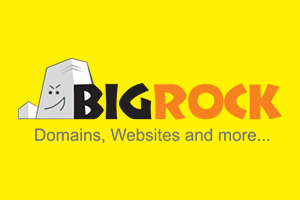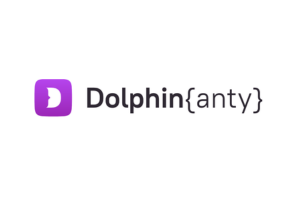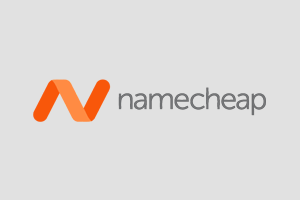If you already have one website, it is possible that you have been considering that your business or interests would benefit from having more than one. If you are a newcomer to this interesting aspect of the Internet, you will be probably confused not only by the quite technical terminology used but also by the many different possibilities, opinions and offers that you can find online. In this article, we will see how easy instead is to setup and manage more than one website, either for business purposes, such reselling, or for personal interest.
Getting domain names is relatively straightforward, just pick the domain registrar you want to buy from and purchase the names you prefer. Of course like with every other investment in life, one must be careful to deal with serious businesses. Prices may vary a little, but on average a.com domain name will cost you around $10/year. Often registrars try to differentiate themselves offering a number of additional services, such as hosting, special offers, support forums and so on. They may also offer special deals, like buy a.com and get a.info free, or free ID Protection (your details will not show up on WhoIs). What you want to especially verify is that the chosen registrar is reputable, has been in business long enough, and from a technical standpoint, make sure they offer an easy to understand control panel (to manage your domains). GoDaddy for example (the largest accredited registrar in the world), allows you to open a free account, so you can see yourself how easy (or not) is for you to navigate through their pages.
Most registrars also offer hosting, but one thing that I want to make clear, is that you do not need to host your websites with the same provider from which you bought the domains. You can buy your domains from GoDaddy (to make an example), and host with someone else. It doesn’t really matter and it won’t cost you more to do so. If this is the case, you will be managing all your domains with your hosting company, and renew and pay the domain names with the registrar. This is done once a year (or two etc.) and takes only a few minutes (or they can even be set to be renewed automatically). Keeping things separate has the benefit that you can shop around for the best deals both for registering and hosting.
If getting a domain name is quite straightforward, not so for the hosting. At this point, in fact, you must figure out what are you getting multiple domain names for. This is because basically, you can have either a shared or a so called reseller hosting account. They are quite similar and for this reason many hosts offer both. Despite the difference in the name though, make no mistake, in both cases you share your resources amongst your websites. The main difference is that with a reseller account you can re-sell hosting, so this solution is good if you want to start this as a business (which can be quite profitable, but of course it is a very competitive niche since it is so easy and inexpensive to get started). From a technical point of view, in a shared account, all your websites will be accessed through a single ftp access, and managed from a single control panel. This is obviously not good if you want to resell hosting to different individuals, but also if you like to keep things separate, or if you plan to sell one or more of your hosted websites in the future. In this case choose a reseller account. All your websites will still share the same IP, the same resources (disk space, bandwidth etc.), but they will each have separate ftp accesses, and each of them will have an unique control panel (usually a CPanel. I assume throughout the article that we are discussing UNIX hosting). The reseller account (the domain that you will be using to open your reseller account) will also have, besides a CPanel, its own control panel (WHM, Web Host Manager), from which you can configure and control all your domains resources, permissions and so on.
Let’s make an example also from a financial point of view. A popular hosting company, HostGator, offers shared hosting starting at $7.95/month for unlimited domains, and also reseller hosting, still for unlimited domains, three times dearer, at $24.95/month. To make things more confusing, the shared hosting package promises unlimited disk space and unlimited bandwidth, while with the more expensive reseller hosting both disk space and bandwidth are clearly limited. One may think that it would be better to purchase the shared hosting, when in fact, for the reasons mentioned above, for many it may not. For one, promising “unlimited” space and speed, like many hosts do, does not make much sense, because, of course, they are both limited (an hard is an hard disk, can’t be “unlimited”!). But since they know and hope that by yourself you will never be able to be using much capacity, “overselling” disk space and bandwidth has become quite common. The lower price for the shared hosting is probably because it is much easier for them to set-up and maintain a shared account vs a reseller’s. Then again other hosts offer reseller hosting cheaper than shared hosting, so just look around. In any case, unless you are going to use multiple domains for strictly personal use – like having more than one blog etc. – going with the reseller account would be more convenient, but not just from a financial point of view. For example with a reseller hosting you also have the opportunity to purchase several important add-ons that can make a difference in the long term. You can add shared or dedicated IP addresses, SSL certificates, and other options. But above all, the convenience of having everything separate and under control with a single WHM panel can’t be underestimated. As said, if you plan to resell hosting this is the only solution, and the beauty of this is also that you will be able to provide your own unique nameservers (not so with a shared account), so in the eyes of the clients you will look like you are the actual host (meaning, to keep the HostGator example, that if you get a reseller account from them, and use your own nameservers, your own customers will never see the word HostGator anywhere, not even at WhoIs. Of course when you resell hosting you will be the one in charge of support towards your own customers).
So how do you proceed to start your very own multi-domains or web hosting company? First thing you want to do is pick a reputable registrar, create an account and purchase a domain that will be your hosting domain, for example let’s call it myhost dot com. Next, purchase a reseller hosting account from an also reputable host, usually you will be charged monthly for this. You will have to indicate your hosting domain, as per example, myhost dot com. After the usual create account, choose username, password etc. and of course payment, you will receive an email with your details. Generally these will confirm and include the type of plan you purchased, the domain name, login details, your panels (i.e. myhost dot com/whm and myhost dot com/cpanel) and IP address (for 1-2 days you will be using http “IP address” in numeral form rather than http myhost dot com, i.e. until the propagation is completed — see below). You will also be given ftp details, and you own mail servers, usually in the form mail.myhost.com. The last important thing will be your own nameservers, which generally are in the form of dns1.myhost.com and dns2.myhost.com. You must register these nameservers at your domain registrar before they will function. These nameservers will be used for all domains hosted in your reseller account. So go back to the registrar and log into your administration panel where you will be able to set the nameservers for myhost dot com. As said these brand new nameservers need to propagate so it may take a couple of days for everything to work properly. Of course, do not forget that for every domain under your hosting (including the hosting domain myhost dot com), you need to set up an account in your WHM. To do so simply login into your WHM with the username and password provided. You will probably get an “Untrusted Certificate” warning, which for the first time you login is normal, just click continue. Once in the WHM you will see Create Account on the left. But before that, you may want to create a few nice “hosting packages”. These are used to define and limit usage for each domain that will be hosted under your hosting service. To create packages just click Add a Package and create a few, such as for example Personal, Business and so on, with different quotas (there should be some pre-made anyway). These packages should reflect the subscription levels that you might be selling as a host. After that click Create Account and pick one of the packages. So to recap: buy a domain, set your own nameservers (at the registrar), create an account for the domain (at your hosting site/whm). Done. You will be using the WHM (from myhost dot com only) to create and manage accounts, and each domain’s CPanel for basically maintenance and (important) details. To do so, type myhost dot com/cpanel and navigate through the many options. First thing you may want to create one or more email addresses, but you can also setup forwarders, make backups, create SQL databases (for WordPress etc.), check statistics, usage, manage files, Cron jobs and much more. CPanels usually come with Fantastico that will allow you to easily install a multitude of scripts, like blogs, content management systems etc.
Having multiple websites does not need to cause headaches. Make sure to have your mind clear on what you want first, and find reputable hosts and registrars. Keep things nice and slowly at first, and tidy, for example with a folder on your computer for each of your domains, where you can save details, backups, your notes, hosting renewal dates and so on. With a reseller account you also have the exciting opportunity to get a first step in the hosting business, or web design, or provider of turnkeys websites, with a very low initial investment. There are not many opportunities on the market to achieve something like this these days.
Tom Mahoney is an author with multiple interests, including creative Web design, SEO, e-commerce solutions, affordable UNIX hosting, turnkey websites, auto-blogging and business opportunities.
Article Source: https://EzineArticles.com/expert/Tom_James_Mahoney/679366
Article Source: http://EzineArticles.com/5260706







